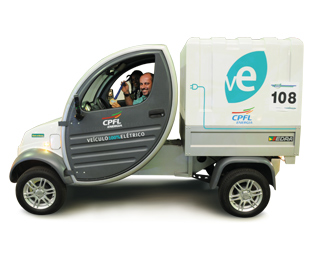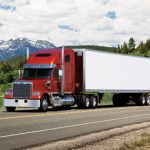Environment and mobility not at war

So global warming and CO2 emissions don’t really concern you? BRUCE CAROLIN heads for Rio de Janeiro in Brazil, where he discovers that climate change is one of the most important issues facing commercial vehicle operators today… and also that the environment and mobility need not be arch enemies.
Mention Rio and visions of suntanned women (and men), beautiful beaches and carnivals spring to mind. But recently an event concerning far more serious issues took place in the city.
The event in question was Challenge Bibendum, a Michelin-sponsored rally that has taken place 10 times in the past 12 years. This massive gathering of business and government officials addresses the growing concern surrounding mobility and the environment. The goals of the event are to find alternatives to fossil fuels, save energy, improve road safety and reduce carbon dioxide (CO2) emissions. Basically its ultimate goal is to ensure that vehicles are not Planet Earth’s nemesis.
But is this all much ado about nothing, or an excuse for a jaunt to Rio? Certainly not. It is estimated that known oil reserves should last another 40 years, while reserves of natural gas and coal will be depleted in 65 and 160 years respectively. And then what?
The Greenhouse gases story made easy
Let’s look at some facts: over the past 40 years the world’s population has more than doubled – from three to 6.7 million people, and growing by 70 million people every year. In the past 20 years 700 new cities have evolved and research shows that over 70% of the world’s population will live in an urban environment by 2050. The cities of today will become megacities and the International Energy Agency predicts that crude oil demand will exceed 100 million barrels a day by 2030 (a barrel equates to 159 litres). Consider that there are currently about 900 million vehicles on the planet. These emit five billion tons of CO2 annually. At projected growth rates, the population in 2050 (nine billion people) will own between two and three billion vehicles. Thus, it is evident that the issue of global warming will increasingly impact on the earth’s fragile atmosphere.
 Greenhouse gases comprise principally a cocktail of CO2, nitrous oxide (NOx) and methane. These greenhouse gases trap the sun’s heat that reflects from the earth’s surface. The International Panel of Climate Change (IPCC) has shown that CO2 levels have increased from 280 to 380 parts per million (ppm) over the last 100 years or so. If we continue on the same path, it is possible that this concentration could rise to over 750 ppm by 2100. The implications of this scenario are dire: it has been predicted that the global temperature would rise by between 4 and 6oC. Taken to the extreme, dams could evaporate, the atmosphere could comprise largely clouds, and we could kiss clear skies goodbye.
Greenhouse gases comprise principally a cocktail of CO2, nitrous oxide (NOx) and methane. These greenhouse gases trap the sun’s heat that reflects from the earth’s surface. The International Panel of Climate Change (IPCC) has shown that CO2 levels have increased from 280 to 380 parts per million (ppm) over the last 100 years or so. If we continue on the same path, it is possible that this concentration could rise to over 750 ppm by 2100. The implications of this scenario are dire: it has been predicted that the global temperature would rise by between 4 and 6oC. Taken to the extreme, dams could evaporate, the atmosphere could comprise largely clouds, and we could kiss clear skies goodbye.
So what needs to happen? Enter the United Nations (UN). This body (that you and I tend to consider an inert universal body looking for free meals and accommodation) actually does do some good work. In 1992 it drafted a framework that sought to limit climate change. The Kyoto Protocol of 1997 set greenhouse emission goals to be implemented by 2012. Subsequent meetings between the G8 and the UN were held in Heiligendamn and Bali where it was agreed to cut CO2 emissions by 50% by 2050. The goal is to contain CO2 levels to a maximum of 450 ppm.
Michelin to the rescue
This is where the Michelin Challenge Bibendum (it must be noted that Michelin had the foresight to address this problem 12 years ago) comes into play. Michelin is very active in seeking solutions that will lower CO2 emissions. Challenge Bibendum is a combined initiative of players associated with the transport (automotive and truck) industry to produce objective information with regards to alternative energy supply and consumption. The company’s newly released generation 5 Michelin Energy Tyre saves up to 0.2 litres per 100 kilometres, and cuts CO2 emissions by four grams per km. If you think this doesn’t sound exciting or revolutionary multiply this data by 900 million vehicles and it becomes very evident that it has the potential to make a massive difference.
Challenge Bibendum is named after that cute round balloon figure with eyes that seem to smile; the chap we all know as The Michelin Man. In 1998 he celebrated his 100th birthday. In celebration of this event, the challenge was inaugurated. Since day one it has been an economy run for vehicles that use popular existing fuels as well as alternative energy sources. The event is controlled by the International Technical Committee (ITC) and runs according to prescribed rules and procedures. There are two categories of tests, namely environmental and performance testing. The environmental aspect covers CO2 emissions, noise, fuel efficiency and pollution while the performance leg is simpler in that it covers acceleration and manoeuvrability.
 This year there were 80 competitors that utilised the full spectrum of energy sources, from unleaded petrol, biodiesel, ethanol, liquid petroleum gas (LPG), hydrogen and electricity to power their vehicles. Bicycles, scooters, cars, trucks and buses all competed. The trucks and buses did a route of 250 km from Riocentro (an exhibition centre in Rio) while the cars travelled 292 km. The city vehicles complete an 80 km circuit in and around urban parts of stunning Rio de Janeiro. The results proved that driving pleasure is not inhibited by the use of alternative energy resources.
This year there were 80 competitors that utilised the full spectrum of energy sources, from unleaded petrol, biodiesel, ethanol, liquid petroleum gas (LPG), hydrogen and electricity to power their vehicles. Bicycles, scooters, cars, trucks and buses all competed. The trucks and buses did a route of 250 km from Riocentro (an exhibition centre in Rio) while the cars travelled 292 km. The city vehicles complete an 80 km circuit in and around urban parts of stunning Rio de Janeiro. The results proved that driving pleasure is not inhibited by the use of alternative energy resources.
Once the various circuits had been completed, all the vehicles were scored
and the star performer was a 7.5 t Mercedes-Benz Accelo prototype, powered by biodiesel derived from sugar cane. It was the only vehicle to record six straight As. The winners by category were:
•Special Car: Aurora Single Seat Racer (solar powered car)
• Light Urban Vehicle: Heuliez Will 3 and Will 5 (battery powered)
•Intercity Car Electric: Smart-Hydrosmart (electric/hydrogen powered)• Intercity Car Prototype ICE: Audi A5 (ethanol powered)
• Intercity Car Production ICE: Audi A3 (BTL powered)
• Light Truck and Urban Bus Protoype ICE: Mercedes-Benz Sprinter Van 313 (20% sugar cane diesel)
• Coach: Mercedes-Benz Marcopolo Paradiso 1200 (diesel powered)
• Truck: Volkswagen 15.180 (diesel/natural gas powered)
The Michelin Challenge Bibendum proved beyond doubt that vehicles and the environment need not be at war; safe and clean solutions do exist to reconcile road mobility with environmental imperatives.
But the message is clear: the time for transformation is now. The next 20 years will see changes that exceed those of previous eras. Road and rail networks have limited expansion capacities (space and cost wise). As such, we will need to find ways of maximizing their use via more efficient mass transportation systems and Intelligent Transportation Systems (ITS), whilst having as little effect on the environment as possible.
Published by
Focus on Transport
focusmagsa



